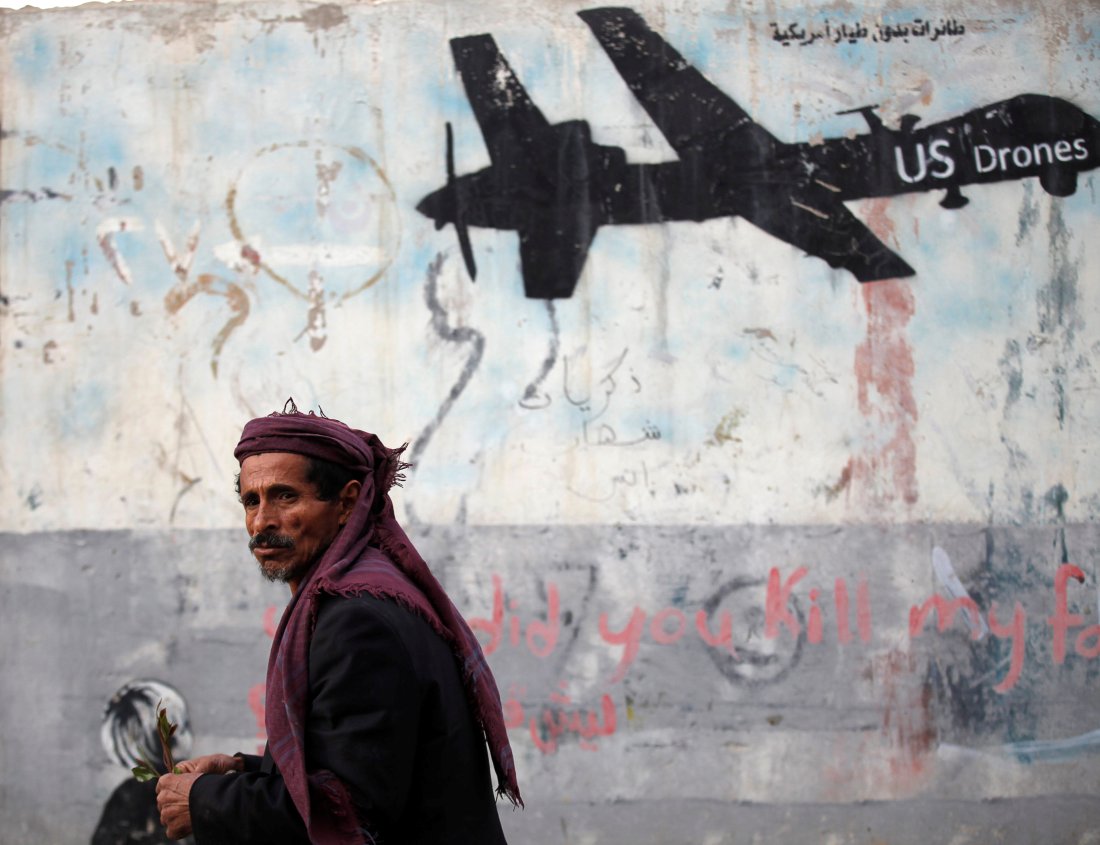by Paul R. Pillar
 The Trump administration has discontinued an annual report, which President Barack Obama had instituted by executive order, that made public the number of counter-terrorist strikes by manned or unmanned U.S. aircraft outside declared war zones, along with an estimated number of civilian casualties from such strikes. The report had shed at least a small amount of light on the continued waging of a “war on terror” across vast swaths of Asia and Africa, including in countries that many Americans may never have heard of. In fact, most Americans are probably unaware that their own country is waging a war in these countries. The Trump administration argues that the report is unnecessary because a separate congressionally mandated report requires the Department of Defense to tally civilian casualties from all military activities. Left unsaid is that the change will leave unreported any strikes conducted by U.S. agencies other than the Department of Defense—a component of this global air war that the administration reportedly has been expanding, at least in Africa.
The Trump administration has discontinued an annual report, which President Barack Obama had instituted by executive order, that made public the number of counter-terrorist strikes by manned or unmanned U.S. aircraft outside declared war zones, along with an estimated number of civilian casualties from such strikes. The report had shed at least a small amount of light on the continued waging of a “war on terror” across vast swaths of Asia and Africa, including in countries that many Americans may never have heard of. In fact, most Americans are probably unaware that their own country is waging a war in these countries. The Trump administration argues that the report is unnecessary because a separate congressionally mandated report requires the Department of Defense to tally civilian casualties from all military activities. Left unsaid is that the change will leave unreported any strikes conducted by U.S. agencies other than the Department of Defense—a component of this global air war that the administration reportedly has been expanding, at least in Africa.
Even apart from that major omission, the rationale for eliminating the report ignores how the politics of war, and thus decisions in a democracy about continuing a war, depend on more than just information buried somewhere in a large report. They depend on the impact on public consciousness and on public perceptions of whether a military operation appears to be accomplishing its objective. A report dedicated to civilian casualties outside of war zones can marginally help to make the public more conscious of this dimension of the U.S. use of lethal force, as well as serving to discipline any administration’s use of lethal force. The same executive order in which Obama initiated the report also established strict rules of engagement for the use of drone strikes when civilians are in the vicinity. Some outside analysts criticized the Obama administration’s casualty figures as an underestimate, but at least the report was a step toward accountability and transparency.
Foreign casualties, of course, even of civilians, will never gain the American public’s attention the way American casualties will. But drone strikes that kill innocent civilians can entail a cost to Americans in the long run beyond the basic considerations of humanity and morality. Dead civilians and the resentment that follows their deaths are fodder for extremist groups that preach messages of hate, violence, and revenge—especially revenge against the nation that caused those deaths. In this respect, drone strikes that run up a civilian death toll constitute a counterproductive aspect of counterterrorism.
Every administration is sensitive to the political downside of war costs, but Donald Trump, more than most U.S. presidents, appears to pay more attention to the politics of the issue than to the consistency and effectiveness in the use of military force. Denouncing past involvement in Middle Eastern wars was one of his campaign lines, but once in office he brought into power hawks such as John Bolton and Mike Pompeo, who are itching to start another such war. As for drone strikes, Trump has been using themfar more than Obama ever did.
A pertinent comparison is with the administration’s policy regarding U.S. troops on the ground in Africa, who have been there as part of that same counterterrorist mission. While the Trump administration is using drones more than ever, it is pulling out troops. The difference appears to revolve around American casualties and the public prominence of them. The killing of four American soldiers in an ambush in Niger in October 2017 received much public attention, and the incident evidently helped motivate an acceleration of the troop pull-out.
The presence of those U.S. troops in places such as Niger can be questioned on other grounds. But the training and guidance they were providing to local forces had at least as much chance of doing some good in counterterrorism, with fewer unintended civilian casualties, than unmanned aircraft firing missiles from thousands of feet in the air. It is difficult to formulate a sound counterterrorist rationale for intensifying the drone war while support to local security forces—which must do most of the heavy lifting in counterterrorism—is being trimmed or eliminated. If the chief consideration, however, is not sound long-term strategy but instead the optics and politics of the moment, then the policies are most unsurprising.
Paul R. Pillar is a contributing editor at the National Interest and the author of Why America Misunderstands the World .
No comments:
Post a Comment